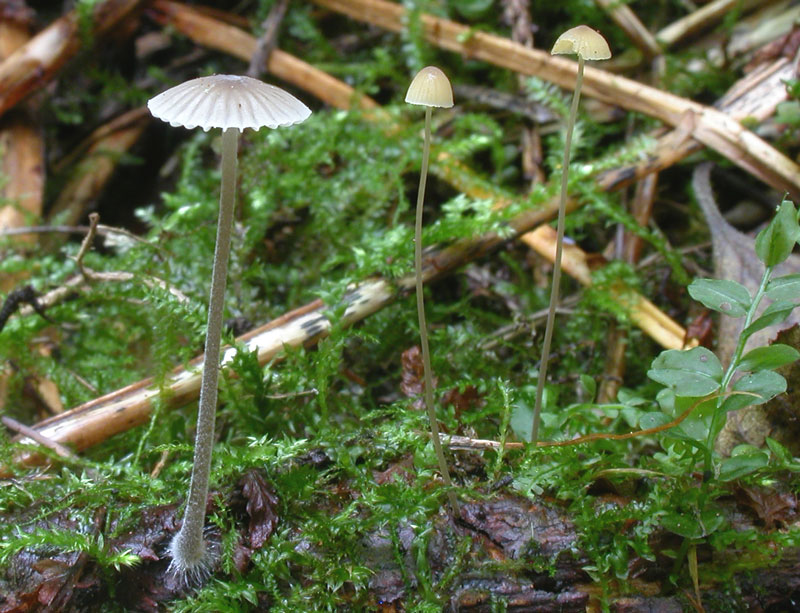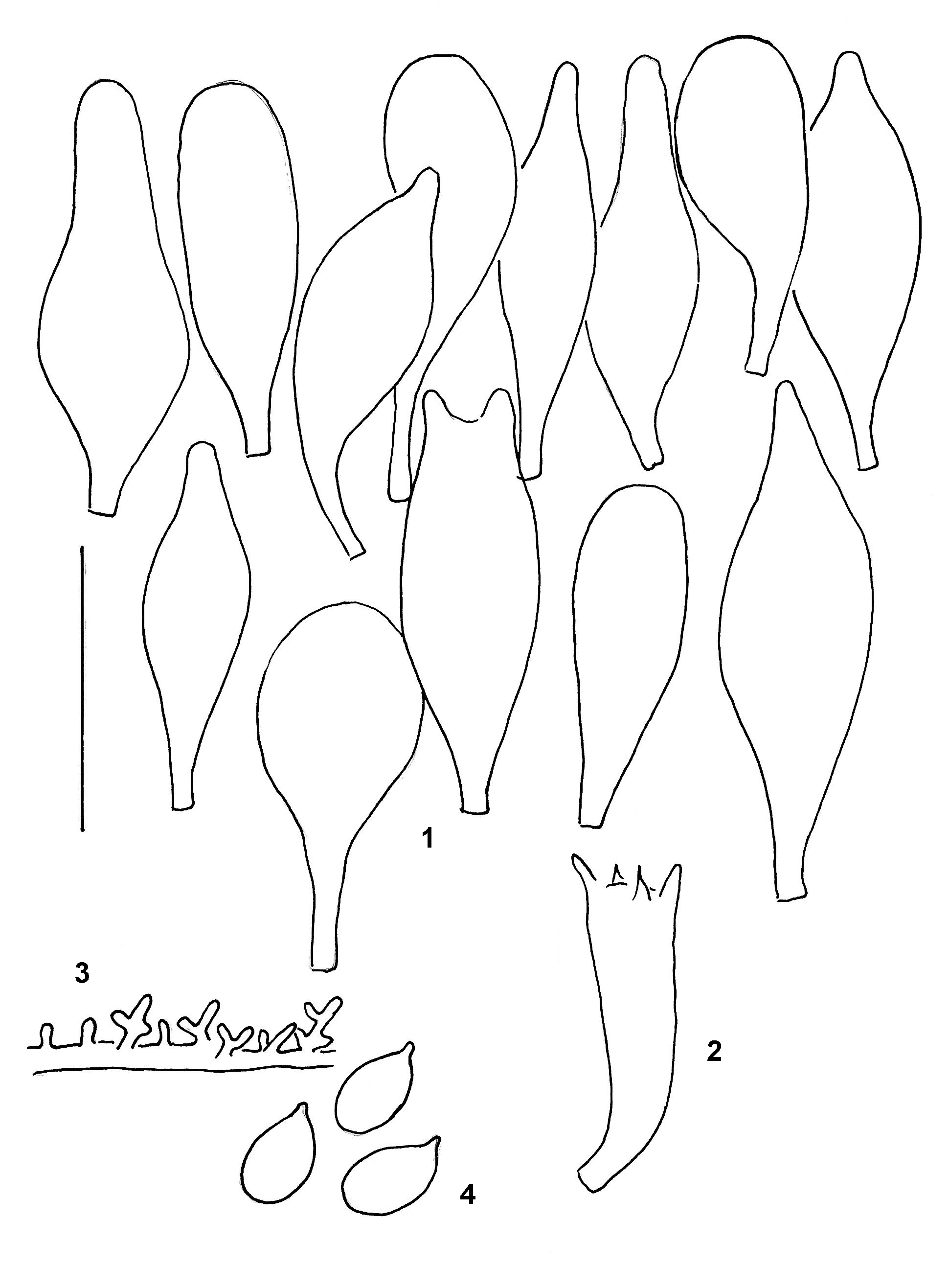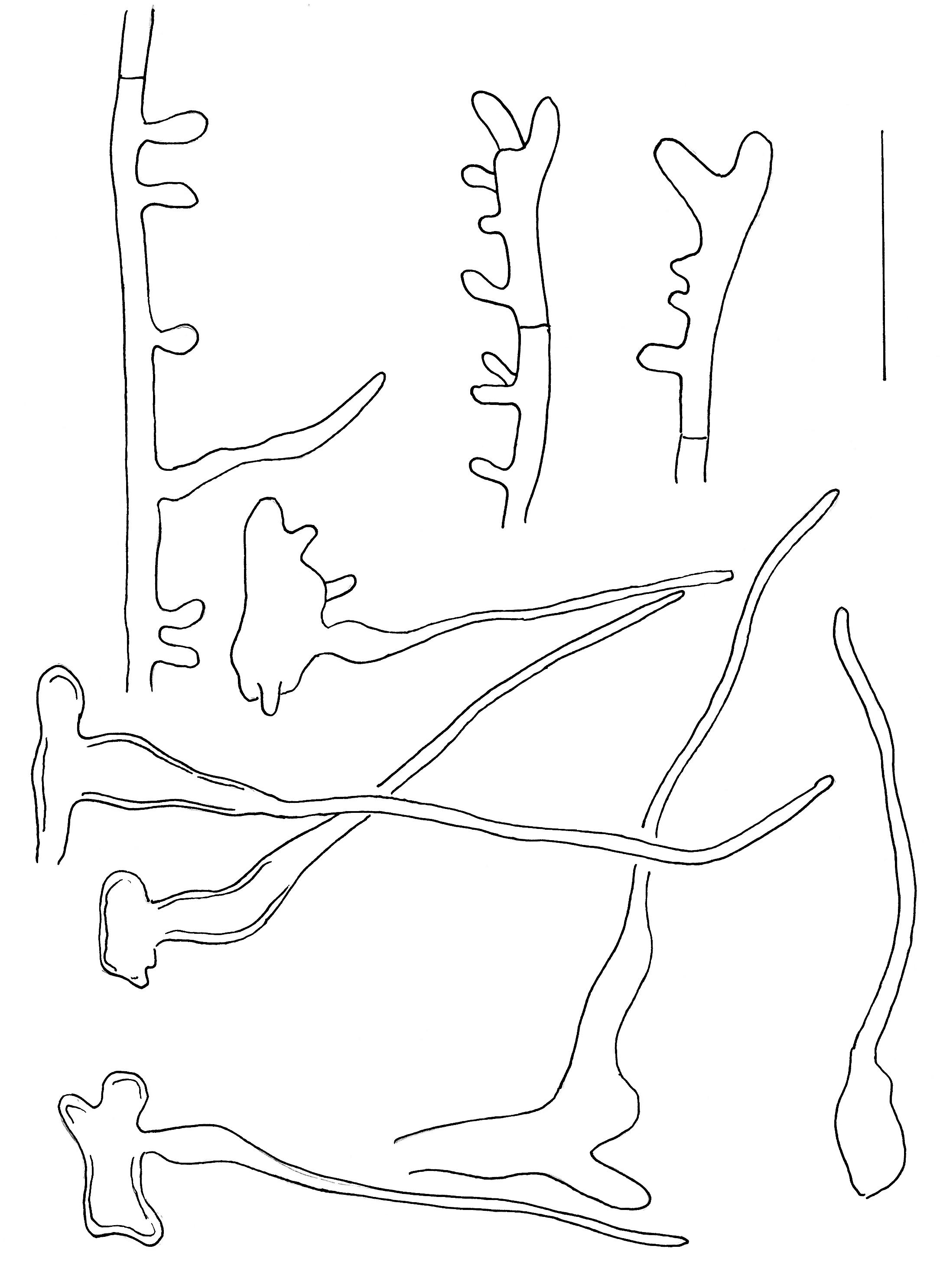Mycena scirpicola
Mycena scirpicola
- Innhold
- Description
- Ecology and distribution
Description
1. Cheilocystidia, 2. Basidium, 3. Hypha of the pileipellis, 4. Spores.
Hyphae of the cortical layer of the stem and caulocystidia.
Cap 6-20 mm across, conical to conical-campanulate, becoming convex with age, shallowly sulcate, translucently striate, dry, slightly hygrophanous, entirely white-puberulous or pruinose, glabrescent, very pale brown to light grey, darker at the centre. Gills 15-27 reaching the stem, adnate to broadly adnate, decurrent with a small tooth, white to greyish to grey-brown, edge concolorous or paler. Stem up to 60 x 2.5 mm, fragile, cylindrical, equal or very slightly wider towards the base, densely white-greyish puberulous in the entire length, pale brown to greyish brown, sometimes becoming very dark grey to black at the base when drying, the base covered with short to long, coarse, whitish fibrils. Odour indistinctive to nitrous. Basidia 20-37 x 7-9 µm, clavate, 4-spored, with sterigmata up to 8 µm long. Spores 8-10.5 x 4.5-6 µm, Q = 1.4-1.9, Qav ˜ 1.7, pip-shaped to subcylindrical, amyloid. Cheilocystidia 26-70 x 8-18 µm, forming a sterile band, smooth, clavate, fusiform, sublageniform to cylindrical, rarely subpyriform (rarely more irregularly shaped with somewhat furcate apex). Pleurocystidia similar if present. Hyphae of the pileipellis 2- 4 µm wide, densely covered with short to long, simple to branched, straight to curved, cylindrical excrescences up to 35 x 1.5-3 µm, not embedded in gelatinous matter. Lamellar trama dextrinoid. Hyphae of the cortical layer of the stem 1.5-5.5 µm wide, smooth or with some isolated thick excrescences 3-10 x 2-3.5 µm and numerous, long, curved to flexuous ‘hair-like’ caulocystidia, up to 300 x 1-5 µm, with somewhat swollen base with slightly thickened walls, tapering towards a simple to furcate apex, sometimes with lateral excrescences; terminal cells somewhat inflated and coarsely diverticulate;. Clamps generellay present, but can be rare or apparently absent.
Ecology and distribution
Found in a great variability of habitats; in moss, on buried twigs, on roots of Rubus sp., dead culms of Scirpus holoschoenus, and needles of Abies alba. Summer to autumn. Very rare.


